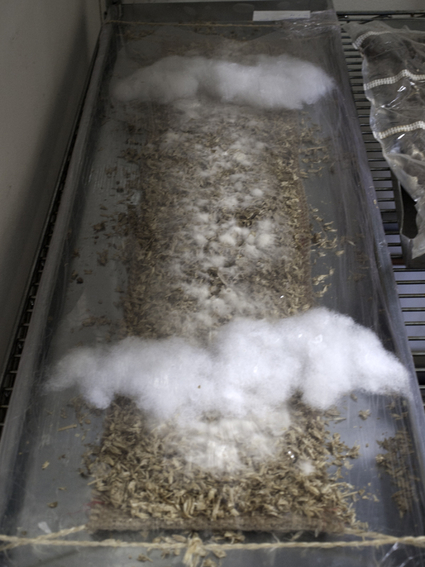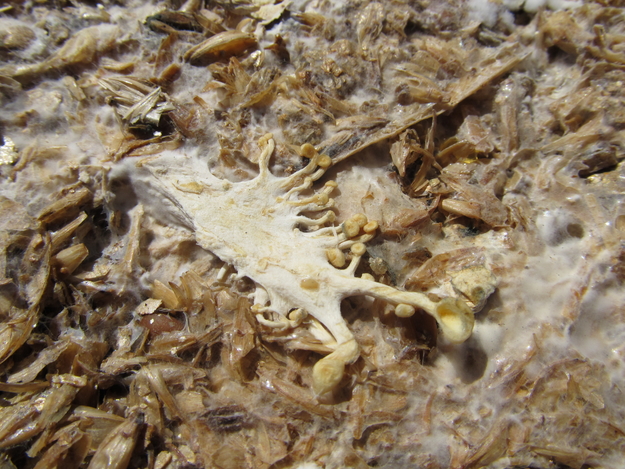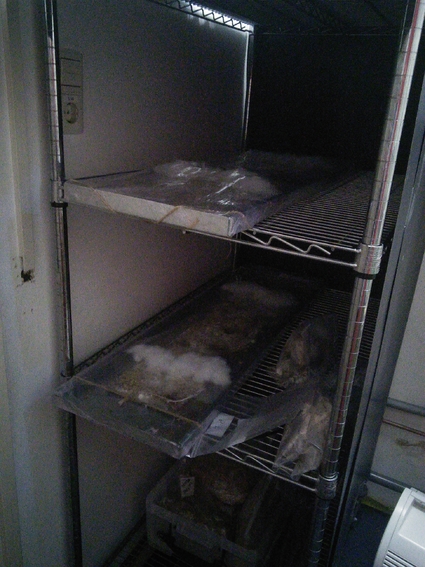Mushrooms and fungus can be found growing anywhere - but making one species grow where you want it is a little more tricky. You have to make sure that the mushroom is the only thing that can grow, so the substrate - base for mycelial growth - needs to be completely sterile. This is most often done with an autoclave or pressure cooker.
What We Want To Use
___
Using waste jute sacks from the booming cacao trade that runs through Amsterdam, combined with waste husks and chaff from the local agricultural industry, we can make thick, spongey and sustainable insulating panels to transform a charming old barn into a thriving event and exhibition space.
The jute will be cut and will be used as the base on which a mixture of husks, vermiculite and water will be placed and inoculated with mycelium.
Testing the Process
___
To test this process, we made samples using jute, husks and vermiculite.
Firstly, circles of jute are soaked thoroughly, before being placed in the bottom of the testing jars, then the husks & vermiculite are mixed with water. The recipe is below.
-Husks - 4 Parts
-Water - 0.5 - 1 Part
-Vermiculite - 0.5 - 1 Part
The substrate is sterilised seperately to the jute, and then mixed with grain spawn to produce even growth.
Unfortunately these pieces were not airtight - so they dried out quickly in our warm incubator! Note to self! Make sure the panels are airtight!
Panel Test - Silver Oyster growing upon soaked husk, vermiculite and jute.
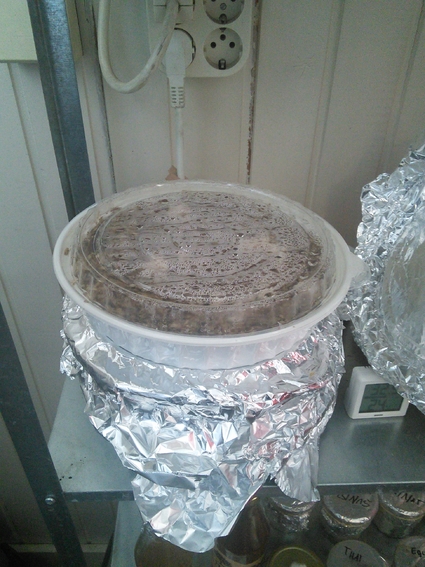
Larger panel tests are being grown in steel trays. These trays are easy to clean with a strong arm, a good sponge and alcohol! Once innoculated the panels are wrapped in cellophane, using a polyester filter to enable a small amount of air exchange. Still, these panels need daily top ups with sterilised water to enable growth. One thing we can do to prevent this is to wrap the panels tighter. The more air around the panel, the more water it will need to stay hydrated. When we have the designed the perfect growing system, it should not need topping up with water.
Rehydrating the Panel - Rehydrating a mycelium panel innoculated with Schizophyllum Commune.
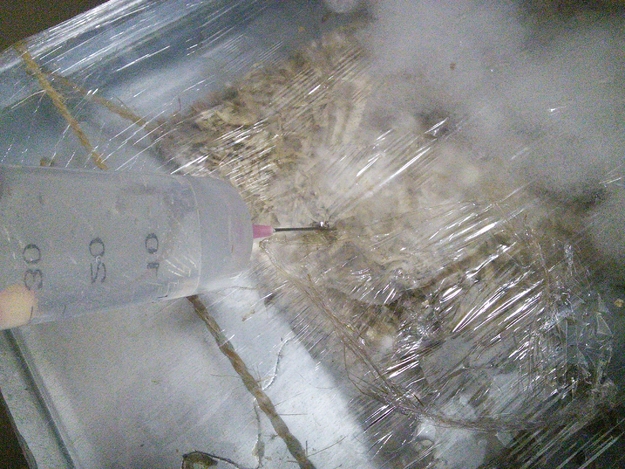
The panels are stored in an incubator room with windows. With the summer coming, more and more sunlight entered the room, which caused a few small mushrooms to fruit from the substrate - we want to avoid this, for an uncluttered aesthetic, and to speed up growth.
Now the panels are growing in near complete darkness, at a temperature of around 28-32°C. We are currently testing two species - Schizophyllum commune, and Pleurotus ostreatus, which you might find in the supermarket as the Oyster Mushroom! These panels are growing, but far slower than you might find at a professional mycelium facility such as ecovative. We aim to vastly improve on our techniques for the exhibition.
What We Are Aiming For
___
The panels when fully grown can be sterilised to stop growth. The panels are not only heat resistant, but also fire-resistant. Tests can be performed with a blow torch. The panel burns on the exterior, but never catches fire. The interior is protected from the heat.
We have grown panels successfully before at mediamatic, but insulating panels for the barn have a few more requirements. The jute needs to be stretched to prevent wrinkling and breakages when placing the panel in the roof. The insulating panels also are much larger. The average panel should be a size of 70cm x 120cm, which brings many issues with contamination, spawn requirements and length of incubation. These are all issues which are being solved as we speak.
